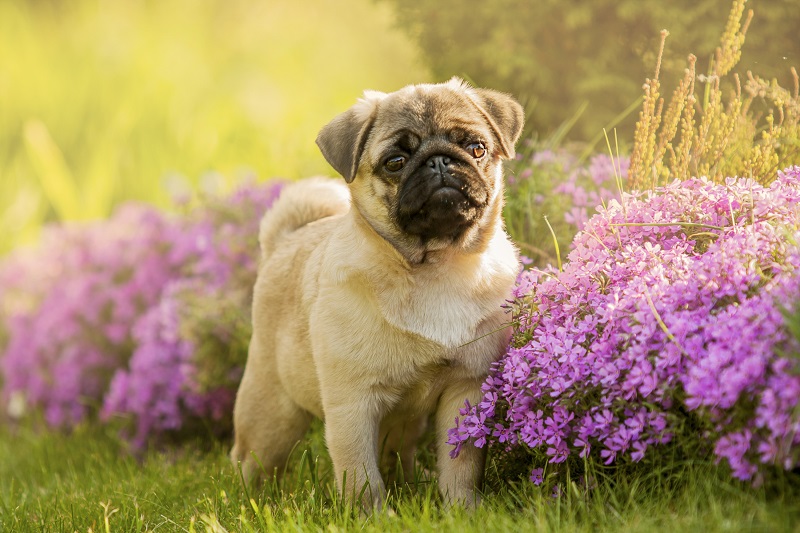
I find the Pug Dog one of the more unique dog breeds. They look like a miniature version of a Bull Mastiff/Bull Dog mix. The ones I’ve met were friendly, a bit excitable and had some interesting breathing issues.
“When excited, they are prone to “reverse sneezing” which causes them to quickly (and seemingly laboriously) gasp and snort.” This is common in dog breeds with short noses and is not considered harmful.
History
From the AKC:
“The truth of how the Pug came into existence is shrouded in mystery, but he has been true to his breed down through the ages since before 400 B.C. Authorities agree that he is of Oriental origin with some basic similarities to the Pekingese.”
China is the earliest known source for the Pug. They were pets in the Buddhist monasteries in Tibet. The breed next appeared in Japan and then in Europe, where they became the favorite in many royal courts.
Look
 The Pug has strong, straight legs set well under their body and a tail that curls tightly over the hip. Expressive wrinkles on the head and large dark eyes that are round in shape.
The Pug has strong, straight legs set well under their body and a tail that curls tightly over the hip. Expressive wrinkles on the head and large dark eyes that are round in shape.
Their coat is short, smooth and glossy. Fawn is the most common color, but you’ll also find apricot fawn, silver fawn or black.
Personality
The Pug is loving, charming and mischievous. The majority of the breed loves children and these sturdy little guys can handle playing with them. Depending on their owner, they can be quiet and docile, but also vivacious and playful.
Pugs tend to have a lazy nature and can spend a big part of their day napping. They are often called “shadows” because they like to stay close to the action, but I find this to be true of many dog breeds.
Resources